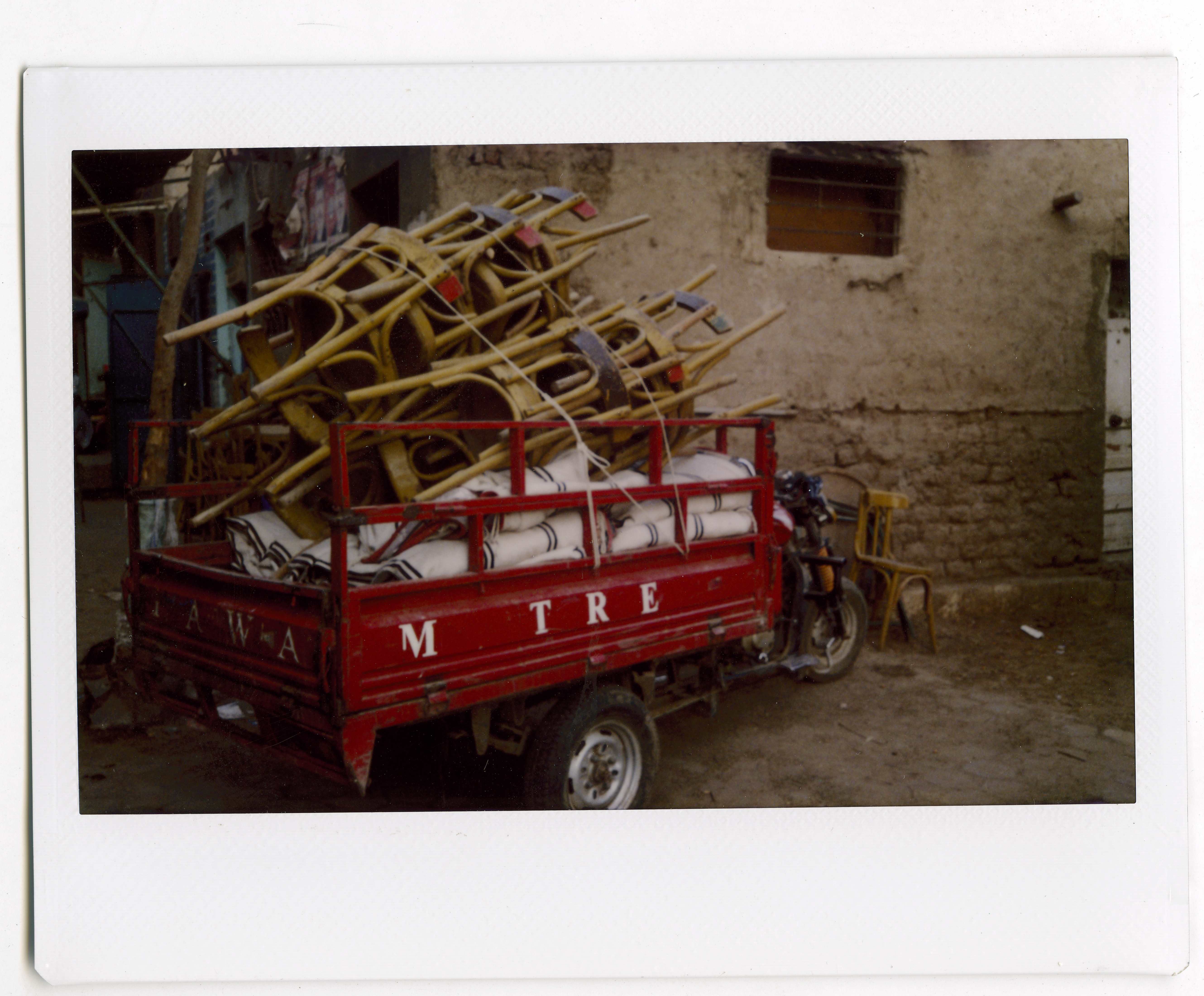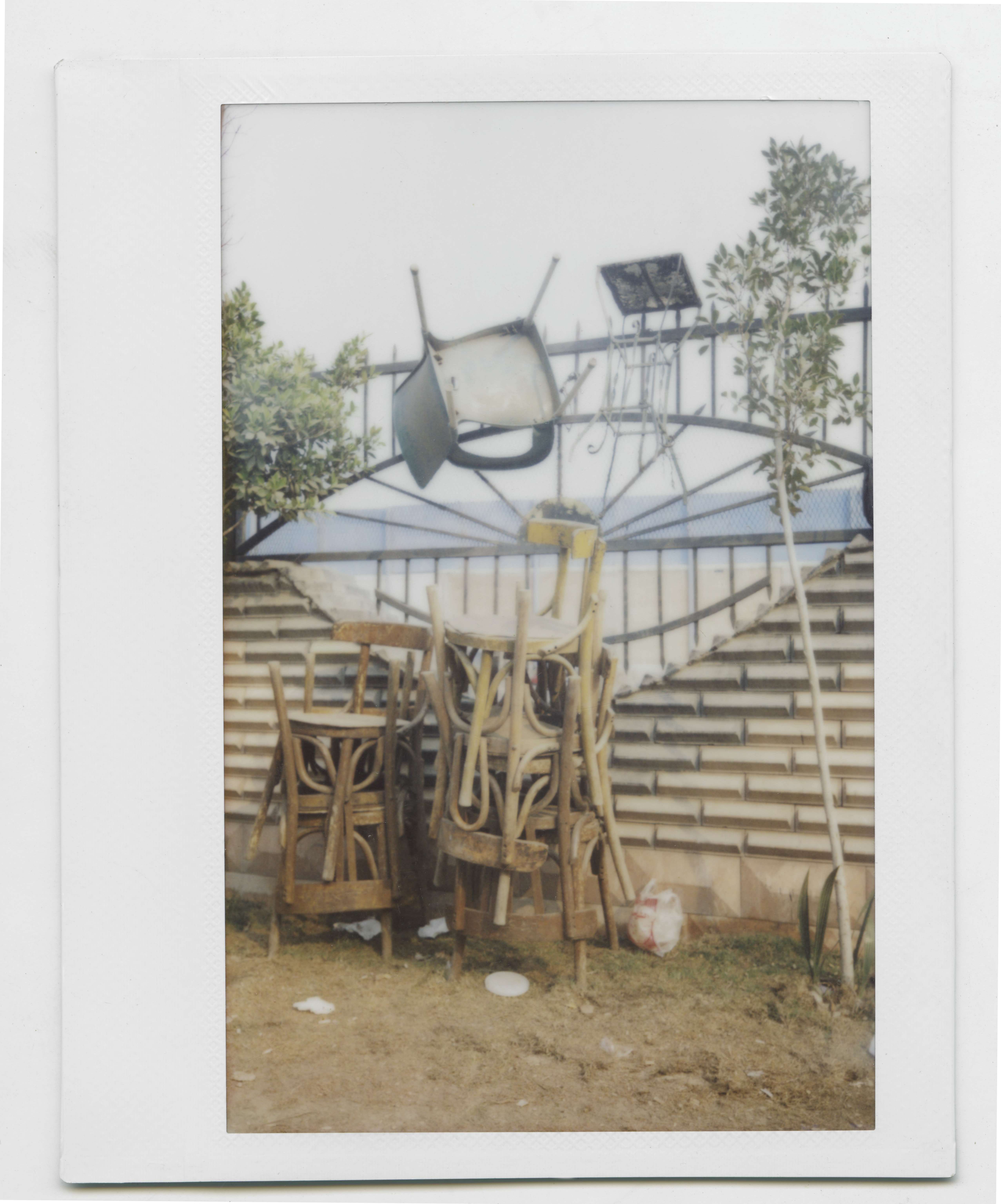Chair tides of Cairo
Authors ········ Manar Moursi & David Puig
Photos ········· Manar Moursi & David Puig
Published ······ Online, Mar 2015
Section ······· Art & Design
Photos ········· Manar Moursi & David Puig
Published ······ Online, Mar 2015
Section ······· Art & Design
Unlike other crowded cities of the world where destitute people seek
permanent refuge on the sidewalk, very few people live and sleep on
Cairo’s pavement. Instead, sidewalk sitting is a temporary respite on a
chair. Cairo packs and unpacks itself daily and it is perhaps a maritime
image that best captures its regular fluctuations: phases of low and
high tide on its sidewalks in the course of twenty-four hour cycles.
Cairo does not wake up early. By mid-morning, shops lift their metal
curtains, informal vendors begin setting up their stalls, and food
kiosks and coffeehouses open for business. Chairs slowly spread to the
streets and as the day progresses their density rises to the highest
level. In the warm months and during the celebrations of Ramadan, when
people gather more outside and stay up late, it is during the nights
that chairs become more visible. The biological clock of street chairs
is set to the nocturnal habits of Cairenes. At the time of closing,
café-boys pile up chairs in tower-like structures and lock them up until
the next morning. When they retreat from the streets to their tiny
rooms, doormen carry their chairs indoor and park them in a corner at
the entrance of their building.
![]()
![]()
There are areas of the city less affected by this tidal logic. Built on reclaimed desert land to the East and the West of the city, the new residential suburbs can be seen as satellites outside of the orbit of Cairo. In the upscale settlements of New Cairo and 6th of October, the number of chairs is almost constant throughout the day and night. It is also reduced since it is a world of wide avenues and gigantic blocks made for cars. Social life does not take place on the pavement but in malls, restaurants and private clubs. Each house is an isolated entity with hardly any contact with its neighbours. The majority of chairs on the sidewalk are the seats of private security guards hired to watch over wealthy residences or half finished apartments. They are either planted in manicured lawns or face grey buildings awaiting completion. Usually framed by a slim security booth, they stand twenty-four hours by the front wall of villas, travelling in and out of their shack but never leaving the area they are supposed to protect.
![]()
![]()
If some chairs have a limited mobility, others undertake longer journeys through the city. From time to time, it is possible to spot a chair, moving through the street in an open cart attached to a bicycle. Those are the old and broken chairs bought by robabekya, vendors who roam the streets in search of discarded objects that can be fixed and reinserted into the veins of Cairo. The circulation of seats in the city can thus be seen as an inverted version of the musical chairs game. Occasionally, it is chairs that revolve and move around people until they find new partners, and not the other way around.
![]()
In the streets of Cairo, chairs can have many incarnations, passing from one set of buttocks to another, supporting generations. In between assignments, some can be temporarily relieved from their mission; packed in balconies, thrown on rooftops, hanging legs up on fences or telephone booths. Demobilised, they wait to be called again to the front lines of the city. A couple of nails, a pirate leg, a few carton boards can bring to an end a season in the purgatory of chairs. At the hands of a new owner, an old chair can come back to life.
![]()
![]()
1001chairscairo.tumblr.com
You can support Sidewalk Salon: 1001 Street Chairs of Cairo's crowdfunding campaign. Pre-order your copy at bit.ly/sidewalksalon


There are areas of the city less affected by this tidal logic. Built on reclaimed desert land to the East and the West of the city, the new residential suburbs can be seen as satellites outside of the orbit of Cairo. In the upscale settlements of New Cairo and 6th of October, the number of chairs is almost constant throughout the day and night. It is also reduced since it is a world of wide avenues and gigantic blocks made for cars. Social life does not take place on the pavement but in malls, restaurants and private clubs. Each house is an isolated entity with hardly any contact with its neighbours. The majority of chairs on the sidewalk are the seats of private security guards hired to watch over wealthy residences or half finished apartments. They are either planted in manicured lawns or face grey buildings awaiting completion. Usually framed by a slim security booth, they stand twenty-four hours by the front wall of villas, travelling in and out of their shack but never leaving the area they are supposed to protect.


If some chairs have a limited mobility, others undertake longer journeys through the city. From time to time, it is possible to spot a chair, moving through the street in an open cart attached to a bicycle. Those are the old and broken chairs bought by robabekya, vendors who roam the streets in search of discarded objects that can be fixed and reinserted into the veins of Cairo. The circulation of seats in the city can thus be seen as an inverted version of the musical chairs game. Occasionally, it is chairs that revolve and move around people until they find new partners, and not the other way around.

In the streets of Cairo, chairs can have many incarnations, passing from one set of buttocks to another, supporting generations. In between assignments, some can be temporarily relieved from their mission; packed in balconies, thrown on rooftops, hanging legs up on fences or telephone booths. Demobilised, they wait to be called again to the front lines of the city. A couple of nails, a pirate leg, a few carton boards can bring to an end a season in the purgatory of chairs. At the hands of a new owner, an old chair can come back to life.


1001chairscairo.tumblr.com
You can support Sidewalk Salon: 1001 Street Chairs of Cairo's crowdfunding campaign. Pre-order your copy at bit.ly/sidewalksalon
Manar Moursi’s work spans the fields of architecture, urbanism, design and art. In 2011, Manar founded Studio Meem Studio Meem,
an interdisciplinary design studio based in Cairo. In 2014, in
recognition of Manar’s architectural design work for Studio Meem, she
received the ArcVision Women in Architecture Award. In addition
to architecture, Studio Meem’s practice encompasses product design
work. In 2012 Studio Meem’s inaugural product line Off the Gireed, inspired by everyday street objects in Cairo, was awarded a Red Dot and a Good Design Award.
Manar has also worked on multiple art projects, and her latest
photography exhibition was shown at the Contemporary Image Collective in
Cairo. Manar’s writings on urban issues have appeared in Thresholds, Lunch, Magaz and Al Masry El Yowm.
David Puig
is a diplomat, translator and publisher from the Dominican Republic. He
has worked in France, India, and Egypt. In 2010, he launched Ediciones De a Poco, a publishing house focused on contemporary literature and art books
from the Caribbean region. While in Delhi, he collaborated with Vislumbres,
a literary magazine which brings together Latin American and Indian
writers. His published translations to Spanish include the novel Les dollars des sables by Jean-Noel Pancrazi.
